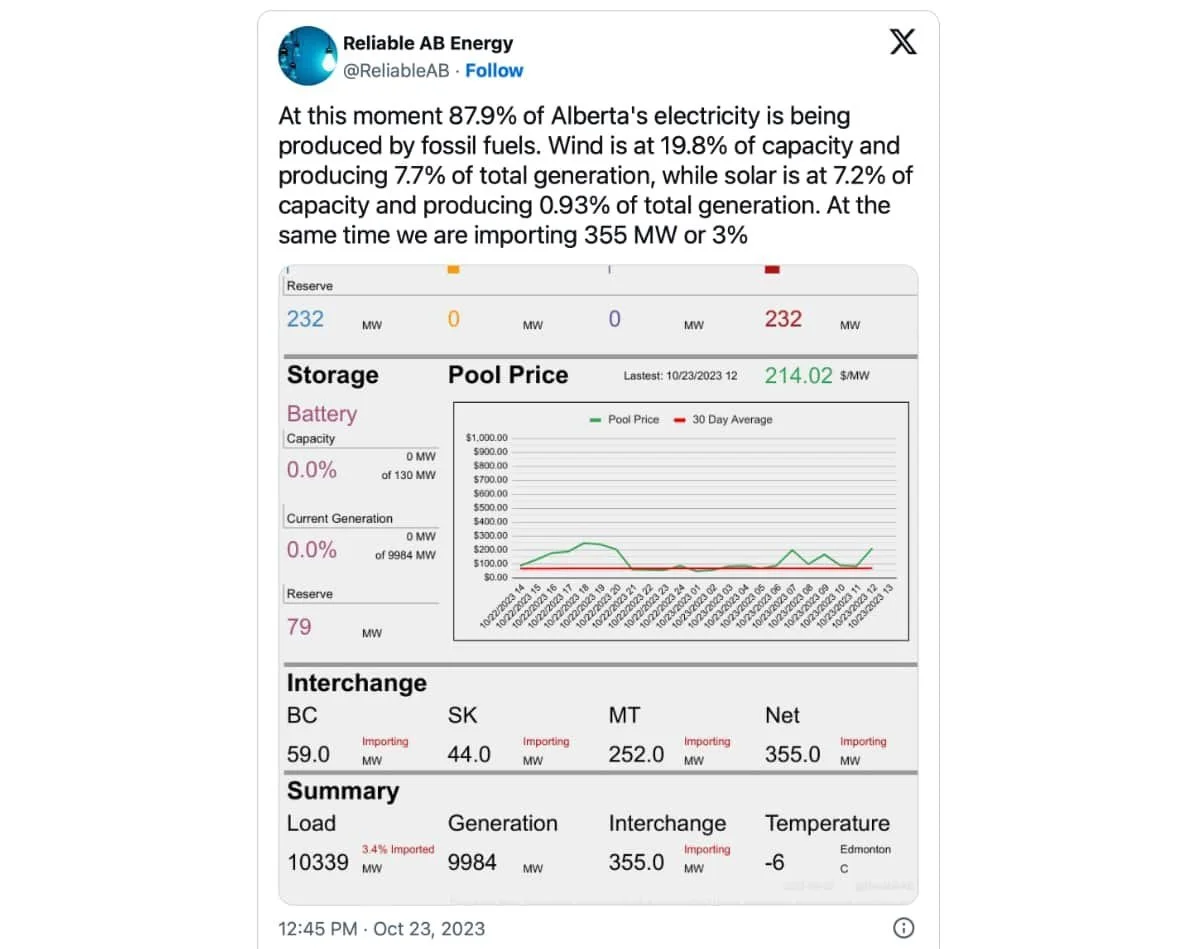Can solar power essentially flatline for a whole day? It did in Alberta on Monday
By Brian Zinchuk
Just because the sun comes up in the morning, it does not mean its going to produce much in the way of usable solar power.
Winter weather blew through Alberta on Monday, Oct. 23, and with it came increased need for power, but decreased capacity to produce it – through solar panels, anyways.
Despite having 1,292 megawatts of installed solar power, Alberta saw less than one-thirteenth of that throughout the whole day, and of course, none when the sun went down.
The Travers Solar Project in Vulcan County was touted by Alberta Energy Minister Brian Jean on Friday, Oct. 20 as the largest in Canada. It has a nameplate capacity of 465 megawatts, and frequently hits that number on sunny days. But that solar facility maxed out at 51 megawatts at 1:16 p.m., according to Dispatcho.app, which logs data from the Alberta Electric System Operator. That’s 10.9 per cent of its capacity. And most of the day, its output was much lower than that.
As for the 35 other solar farms in Alberta besides Travers, which is in a class of its own, not one solar farm produced more than 7 megawatts the entire day. Indeed, only one made it to 7 megawatts. Most of the larger facilities topped out at 5.
X bot account @ReliableAB provides hourly snapshots of the Alberta electrical grid generation. And while it is possible that solar generation briefly spiked, the highest hourly sample recorded was 93 megawatts, at 12:39 p.m. That time is corresponds within 38 minutes of the Travers peak. That means at 12:39 p.m., during the noon hour when the sun is highest, Alberta’s solar generation topped out at 7.2 per cent of nameplate capacity.
However, at the same time, Alberta’s two remaining coal generators were operating at 98.5 per cent capacity, producing 808 megawatts out of 820 nameplate capacity. That one remaining coal facility was producing more than 8x the entire fleet of 36 solar farms were at their mid-day peak.
For context, the federal government, through its Clean Electricity Regulations, is pushing the implementation of non-emitting power generation, especially wind and solar. Those regulations would see unabated natural gas power generation prohibited by 2035, allowed to operate only if extremely efficient and costly carbon capture is implemented. Without carbon capture, natural gas power generation would only be allowed to operated for 450 hours per year, an allotment Alberta Premier Danielle Smith has said would be used up before the end of January.
SaskPower is on course to add another 3,000 megawatts of wind and solar projects by 2035, to be built and operated by independent power producers.

